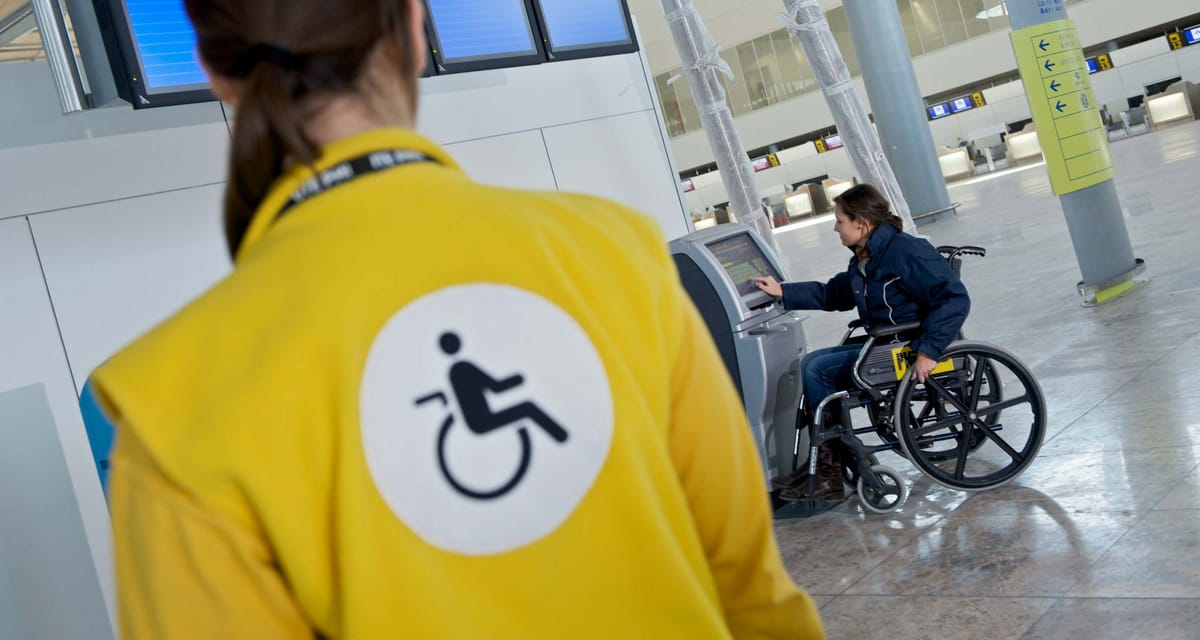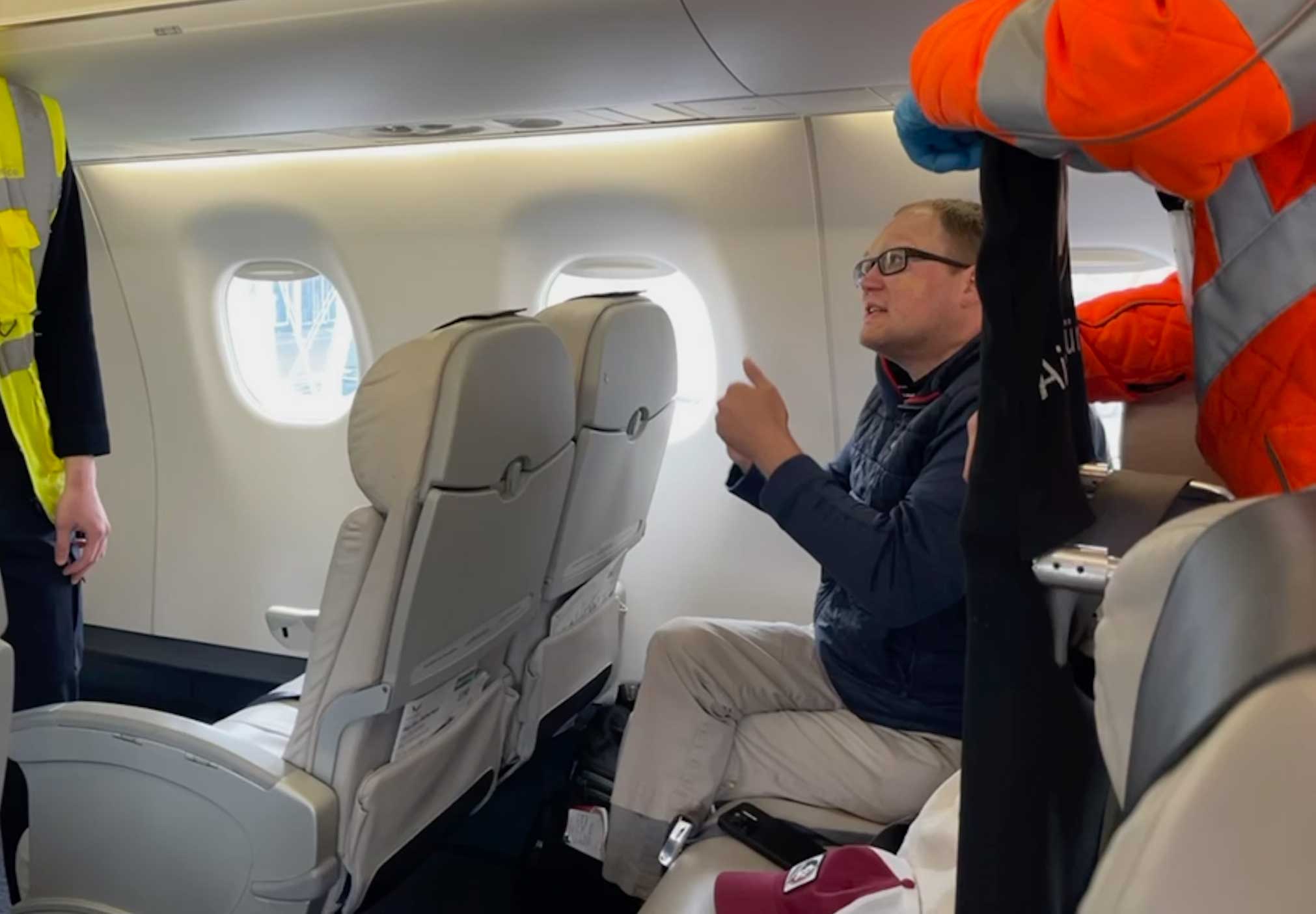The SSR Code Airlines Desperately Need

The SSR Code Airlines Desperately Need
At my home airport (St. Louis Lambert International Airport — STL), American Airlines staff know not to come onboard with the aisle chair until my power wheelchair is waiting in the jet bridge. This is a trained behavior — early on, I had to argue for the wheelchair’s return and it was only after months of repetition that the team was sufficiently trained to understand my preference (which is the prevailing preference of passengers traveling with their own wheelchairs).
American Airlines and every other carrier, as far as I know, train staff to get disabled passengers off the plane after all other passengers have deplaned, regardless of whether their personal wheelchair has been returned.
I often am told, “we have to get you off now, as this plane is departing on another flight” and, after I refuse and insist on waiting for my own wheelchair, I am sometimes given a guilt-trip with phrases like “you will make other people late” or “don’t you care about the other passengers who are waiting on you?” Given how often I fly, it happens every week — at airports other than my home station. My response is always the same, “any delays are the airline’s fault, not mine.”
Gate agents and assistance staff are almost universally unaware that I am traveling with and waiting on my own wheelchair. While there are Special Service Request (SSR) codes that identify passengers have checked personal wheelchairs, they provide staff with no information on where those passengers have requested to retrieve them.
Special Service Request (SSR) Codes – Wheelchair Travel
SSR Codes must be added to an airline passenger reservation when wheelchair assistance is requested at the airport. These codes also note other disabilities and needs, including hearing and vision impairments, customers traveling with service animals, and those with allergies.

In 2024, American Airlines introduced a new wheelchair claim tag which it claimed would “improve how we handle wheelchairs for our customers.” A year in and with more than 100 flights under the new tagging regime, I have not noticed any difference in the speed or frequency with which my wheelchair is returned. As I wrote in my reaction to the news, the “tag contains no new information” than the previous handwritten one, and “the disabled passenger experience will not improve…without a complete overhaul of its failed training programs.” The new tag was, as I wrote in the headline, “lipstick on a pig.”
The information on the tag, including a directive to return wheelchairs to “all jetbridges,” is not shard with gate agents or assistance staff; passengers themselves are left to navigate often tense environments, convey that information and insist that their wheelchairs be returned. In these cases, I find myself providing what is effectively on-the-job training to airline employees and contractors wherever I fly. If they listen and take mental notes, they will have learned much more about the Air Carrier Access Act and treating customers with dignity than they will ever learn from their employer.

Improved training, while necessary, is only one piece of the puzzle. Staff in the terminal building, in the aircraft cabin and below the wing on the ramp need to communicate better, and they need tools to more effectively understand the needs and expectations of airline passengers.
The SSR code system has long been in need of an overhaul, but one easy patch in the meantime would be the addition of a new code for passengers whose personal wheelchairs must be returned to the gate. Allow me to suggest “WCRTG” — “Wheelchair Return to Gate.”
Placing this new SSR code into a passenger’s record would allow airline team members to know what is expected of them:
- Lead flight attendant — Remind gate agent that passenger is expecting their personal mobility device at the aircraft door; prepare cabin crew to wait onboard until the passenger’s wheelchair is returned
- Gate agents — Communicate with ground crew to check on the status of the wheelchair’s return and follow-up as necessary; regularly communicate that information with the passenger or assistance staff
- Assistance staff — Offer passenger two OPTIONS: (1) to wait onboard until their wheelchair has been returned; or (2) to deplane and wait for their mobility device in the jet bridge or gate area
The preceding is a (very) rough draft of an operational plan and division of responsibilities that could be implemented to support a new “WCRTG” SSR code. It would transform the chaotic situations that disabled passengers currently face by requiring gate agents to take the lead on securing the wheelchair’s return and to keep passengers informed throughout the process. Ramp agents, in addition to receiving information about mobility devices through the cargo manifest, would also receive a reminder (or series of reminders) from the gate agent.
Each of these interventions would support the airline’s goal of an on-time operation, while delivering an improved travel and assistance experience to the disabled passenger. Perhaps, with a new SSR code and appropriate training, wheelchair users would no longer be forced to argue for the return of their mobility devices. I encourage airlines around the world to implement the “WCRTG” SSR code so that airlines can be empowered to define processes that uphold the civil rights and dignity of disabled travelers.




